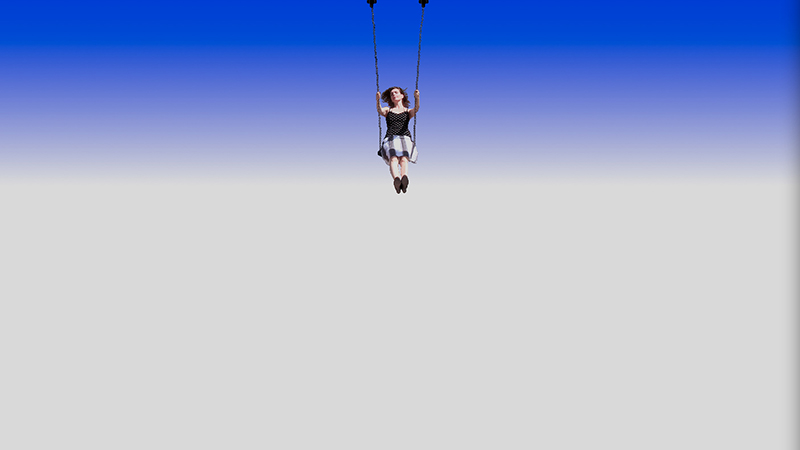
Each year artists, gallery owners, collectors, curators and critics from around the world gather in Basel to attend a series of contemporary art fairs. Although the most significant of these is undoubtedly Art Basel, there are a number of satellite fairs – such as Design Miami, Liste, Scope, The Solo Show and Volta – that are also very much worth visiting.
Neo-kinetic
The major contemporary art galleries, like Denise René of Paris, are grouped on the ground floor of Hall 2. Here we discover kinetic and neo-kinetic works by artists such as Elias Crespin – a linear artist who literally draws in space. Crespin’s installations, although numerically controlled, are perfectly timeless. They evoke the architectural drawings that define cities. Decidedly unstable, they slide from order to chaos in slow reconfigurations. Silent, they slow down time for the viewer. Each square steel wire of “Caras 32 in Marco” is diamond shaped and one passes from a front view, at eye level, to a perspective view. Crespin’s neo-kinetic works of are part of a continuity in the history of art rife with discoveries like perspective and innovations such as languages and scripts. The Venezuelan, who lives and works in Paris, is also an artist of the invisible, an essential component of all works proceeding from a form of illusion.
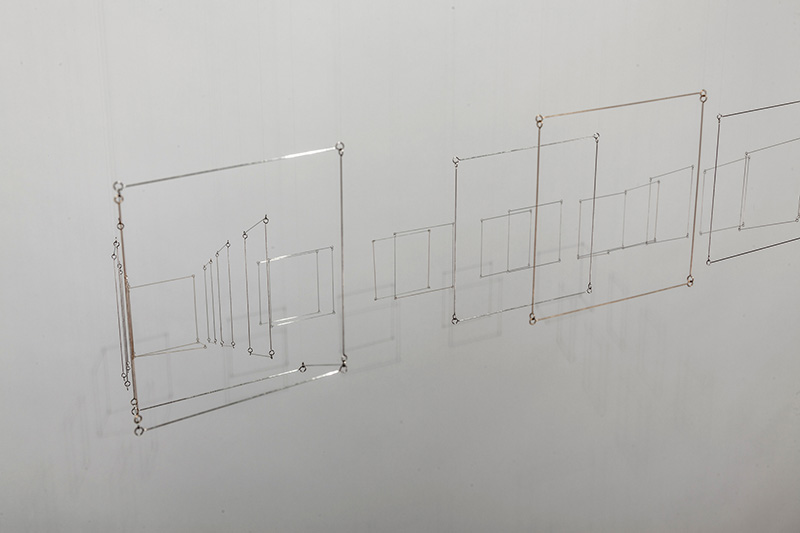 Elias Crespin “32 Caras en Marco”, 2014, source Pascal Maillard, courtesy Denise René.
Elias Crespin “32 Caras en Marco”, 2014, source Pascal Maillard, courtesy Denise René.
Through the looking glass
Jeppe Hein, one of the artists exhibited by the Johann König Gallery, is presenting “Vertical Cut”. The work consists of a mirror that functions normally, except for a section in the middle which ripples the image. It is precisely this imperfection that makes the art work. Viewers who approach seem to disappear, as though caught in turbulence. One thinks of the passing through the mirror scene in Orpheus by French director Jean Cocteau – with one major difference: In the 1950 film, the ripples on the surface of the mirror are connected to the crossing between worlds, whereas in this installation they are the reason for the disappearance of spectators. Hein, whose work is interspersed with illusions, encourages us to look beyond the works themselves, to see the world differently.
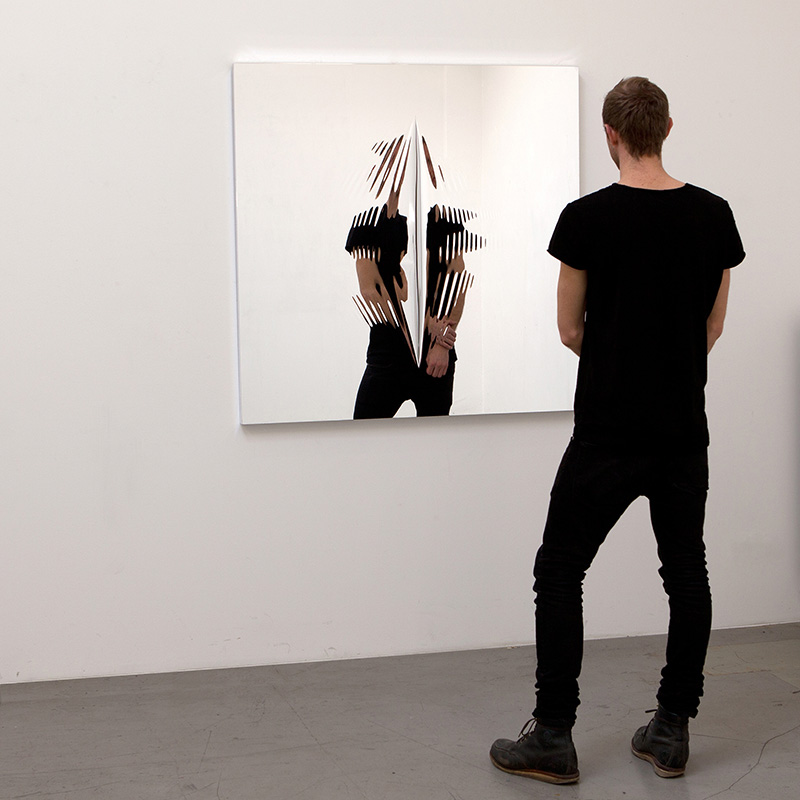 Jeppe Hein “Vertical Cut”, 2014, courtesy Johann König & 303 Gallery.
Jeppe Hein “Vertical Cut”, 2014, courtesy Johann König & 303 Gallery.
The elusive in art
Mechanisms and reflections are also explored at the Alice Pauli Gallery (Lausanne) stand, which is presenting a small piece entitled “Mirrored Butterfly” by Rebecca Horn. It features a butterfly, the interior of whose wings are painted in a blue colour similar to the pigment we see on the other side of the mirror. The insect catches our eye when its wings surreptitiously come alive for a few beats. The apparent fragility of the butterfly is increased by the mechanism that is intermittently activated. The small size of the piece is itself a gesture of intimacy, but it also reflects an elusive form: the beating of the wings is only momentary and creates a certain frustration in a viewer whose attention has been piqued. The gallery owner, however, reassures us that “they will beat again.” The blue pigment also has an elusive quality, which in Giotto evokes the divine, and there is sense of a game of mirrors that makes this piece impossible to perceive in its entirety. Preserving their mystery, the works of this German artist never reveal themselves entirely.
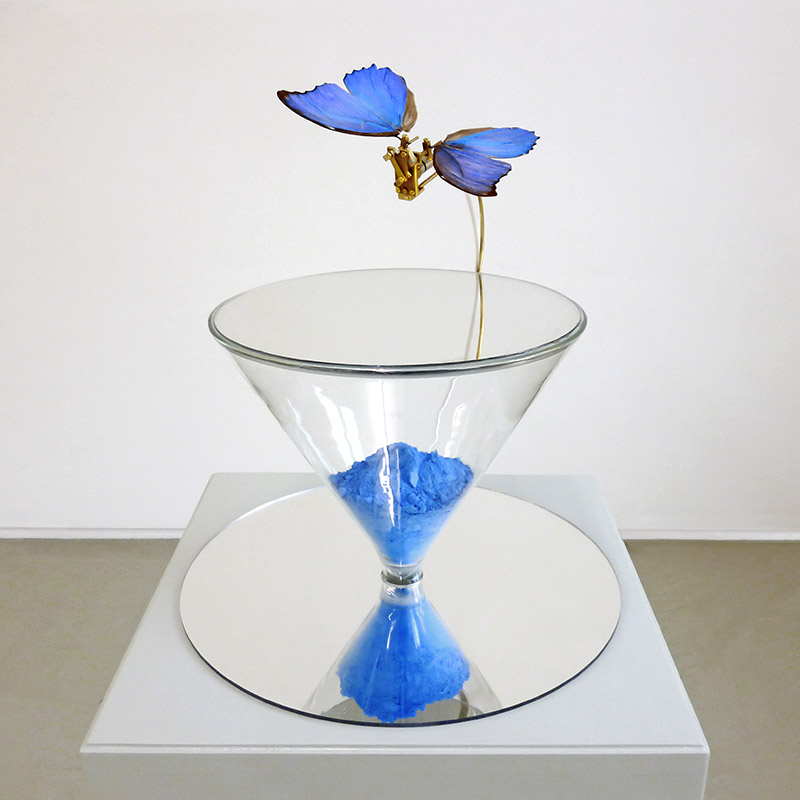 Rebecca Horn “Mirrored Butterfly”, 2013, source Jacques Bétant, courtesy Alice Pauli.
Rebecca Horn “Mirrored Butterfly”, 2013, source Jacques Bétant, courtesy Alice Pauli.
Manipulations of the invisible
This year a number of galleries – Konrad Fischer, Koyanagi, May 36, Rudiger Schöttle, David Zwirner – are displaying prints from the “photograms” series by Thomas Ruff. The attention of the latter, previously trained in German objective photography by Bernd and Hilla Becher, has recently focused on making photograms. Limited by size and colour, he began by designing a sort of virtual darkroom, a three dimensional space where one can manipulate virtual objects to print surfaces that are virtually sensitive to light. The photograms that are obtained are relatively pictorial with elusive forms that evoke cubism. The objects, like those captured by Man Ray and Laszlo Moholy Nagy, have a ghostly presence. There is something here that recalls the idea that we are in an era of the invisible, initiated by discoveries and developments in science and art.
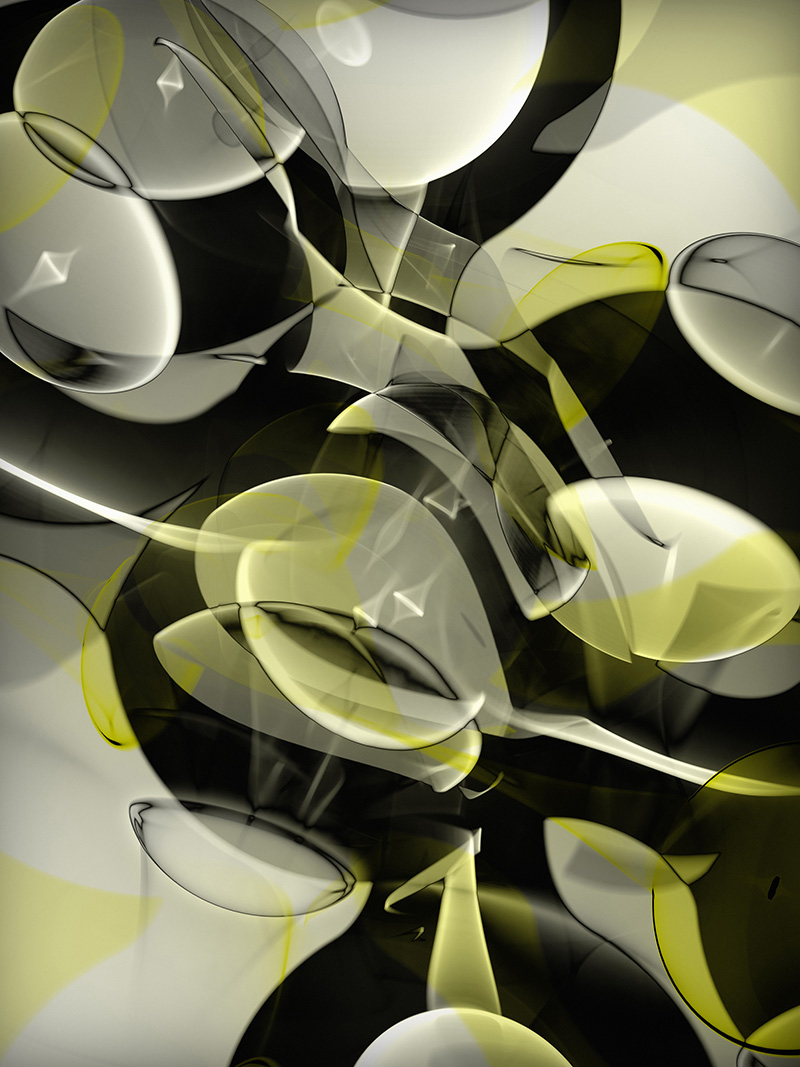 Thomas Ruff “r.phg.s.03_I”, 2014, courtesy Mai 36.
Thomas Ruff “r.phg.s.03_I”, 2014, courtesy Mai 36.
Removing redundancy
In Basel, there are always a few pieces by Julian Opie. This year “Jet Stream” is being presented by the Bob Van Orsouw Gallery, while the Lisson Gallery is displaying “People I”. The style of the English artist, whether he is working with landscapes or figures, is immediately identifiable. It could be argued the artist even has his own school, if we consider the number of people who post “Create a Julian Opie Style Portrait.” tutorials on the Internet. His fascinating stroke is part of a form of reduction that is about getting to the point and removing redundancy in the image. The low resolution of the LED screen “People I” participates greatly in this aesthetic of essentials. This elimination of redundancy over time consists in creating loops that are as short as possible and endlessly repeated: something which inevitably evokes pre-cinematic devices. Opie questions representation more than society, grabbing the viewer’s attention with simple shapes, inducing mesmerizing repetition of movements over time.
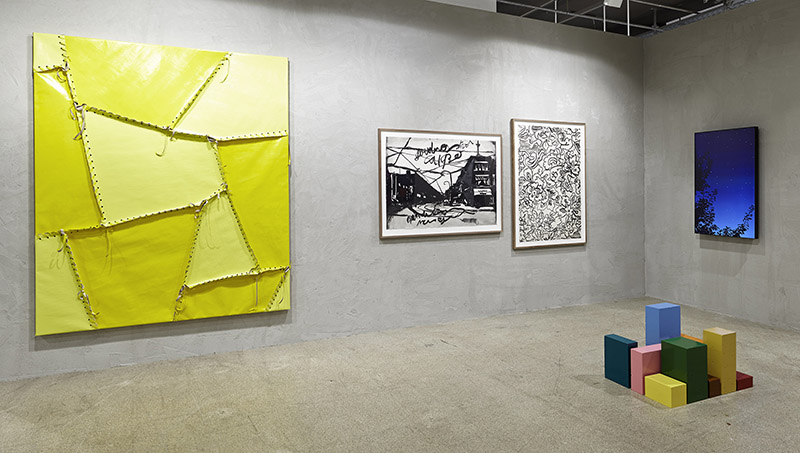 Julian Opie, “People I”, 2014, courtesy Lisson Gallery & Bob Van Orsouw.
Julian Opie, “People I”, 2014, courtesy Lisson Gallery & Bob Van Orsouw.
Surveillance Society
Galleries specialising in emerging artists, such as OMR from Mexico, can be found upstairs in Hall 2. This is where Rafael Lozano-Hemmer unveiled his interactive “Nineteen Eighty-Four” installation. Google Street View cameras have captured the address numbers of almost every home in the world. The Mexican artist, who lives and works in Montreal, has isolated these images to create a kind of counter. When a number is entered into the keypad provided a count-up or count-down is initiated that culminates in the number 1984. In his famous book George Orwell imagined a world under surveillance; a society that bears some resemblances to our own, where the extent to which certain services are practical or invasive is not clear. We even take some pleasure in this, documenting our lives much better than the administration of a totalitarian system would, as if we have nothing to hide, but perhaps everything to fear.
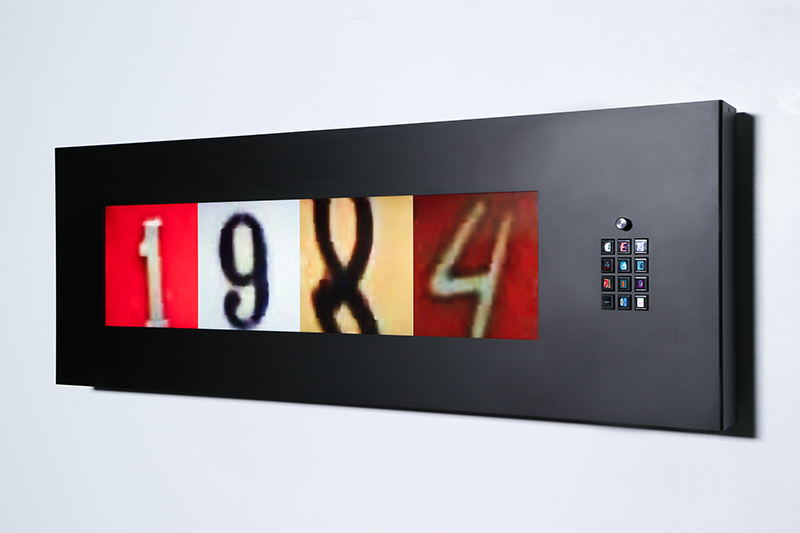 Rafael Lozano-Hemmer “Nineteen Eighty-Four”, 2014, source Antimodular Research, courtesy OMR & Bitforms.
Rafael Lozano-Hemmer “Nineteen Eighty-Four”, 2014, source Antimodular Research, courtesy OMR & Bitforms.
Poetry by constraint
Hall 1 houses solo shows and other large-scale installations that make up the “Unlimited” program. Thaddaeus Ropac Gallery is presenting Harun Farocki’s multi-channel installation entitled “Parallel”, an artistic project initiated in 2012 that provides an overview of representations of the world in video games. The title of this piece makes some reference to the broad range of very different virtual worlds that exist; from the exaggerated pixel sizes of the 1980s to the oddness of the characters in Grand Theft Auto, who seem to exhibit neither fear nor sympathy. Today’s games are smoother than those of yesterday, but they are no more realistic in the end. Their worlds are finite and wandering about is generally prohibited. Images that synthesize our world have always been and always will be calculated by machines to be “played” on other machines. Programmers, who are often too focused on the actions they propose or impose, sometimes forget the most basic laws of physics or optics. The voice-aver by the artist is therefore critical to this work, playing with the inherent limitations of parallel worlds by building a narrative around them. Poetry here is poetry by constraint, just as there is a programming by constraint.
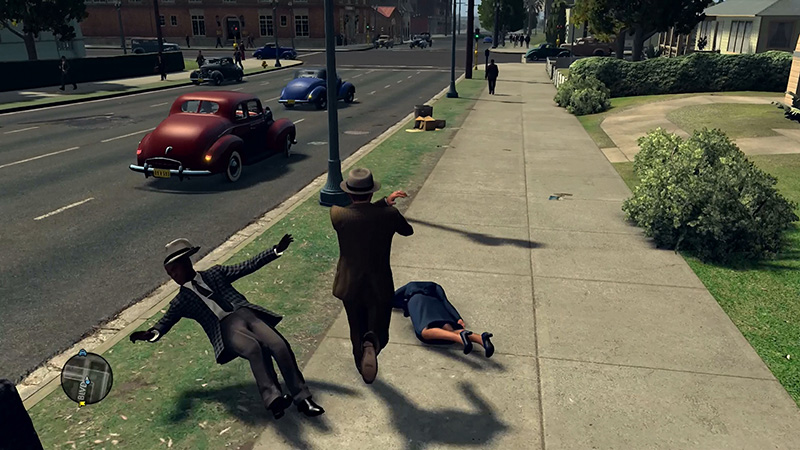 Harun Farocki, “ Parallele”, 2012-2014, courtesy Thaddaeus Ropac.
Harun Farocki, “ Parallele”, 2012-2014, courtesy Thaddaeus Ropac.
A global animation
Liste is among the most respected of the alternatives at Art Basel whose branches in Miami as Hong Kong are well known. And it is in the basement of this “small” fair where you must go to find the global work on display at the non-commercial booth Haus der Elektronischen Künste Basel or H3K. Here is a frame-by-frame animation of a young woman on a swing. But each of these frames is hosted on a different server belonging to their friends. This animation loop of twenty-five frames, which is the frequency per second of a video sequence, may be fluid one day. But the jerkiness in the image today speaks of the thousands of kilometres that are being travelled at the speed of light, or almost, so the carefree young girl may continue to swing. She is swinging via the use of submarine cables and satellite feeds. There is therefore nothing more global than this animation entitled ‘Summer’ conceived by Olia Lialina. Its lightness, not to say weightlessness goes against the power and complexity of the technologies implemented. And it is perhaps this “contrast” that qualifies this animation loop as a work of art.
 Olia Lialina “Summer”, 2013.
Olia Lialina “Summer”, 2013.
Founder of MediaArtDesign.net, Dominique Moulon is an art critic and independent curator. He has published the eBook Contemporary New Media Art and teaches in several Parisian schools and universities.
Links:
Art Basel: http://www.artbasel.com
Denise René: http://www.deniserene.com
Elias Crespin: http://www.eliascrespin.net
Johann König: http://www.johannkoenig.de
Jeppe Hein: http://www.jeppehein.net
Alice Pauli: http://www.galeriealicepauli.ch
Rebecca Horn: http://www.rebecca-horn.de
Konrad Fischer: http://www.konradfischergalerie.de
Koyanagi: http://www.gallerykoyanagi.com
Mai 36: http://www.mai36.com
Rudiger Schöttle: http://www.galerie-ruediger-schoettle.de
David Zwirner: http://www.davidzwirner.com
Bob Van Orsouw: http://www.bobvanorsouw.ch
Lisson: http://www.lissongallery.com
Julian Opie: http://www.julianopie.com
OMR Gallery: http://www.galeriaomr.com
Rafael Lozano-Hemmer: http://www.lozano-hemmer.com
Thaddaeus Ropac: http://ropac.net
Liste: http://www.liste.ch
H3K: http://www.haus-ek.org
Olia Lialina: http://art.teleportacia.org/olia.html
Summer: http://art.teleportacia.org/olia/summer











 Elias Crespin “32 Caras en Marco”, 2014, source Pascal Maillard, courtesy Denise René.
Elias Crespin “32 Caras en Marco”, 2014, source Pascal Maillard, courtesy Denise René. Jeppe Hein “Vertical Cut”, 2014, courtesy Johann König & 303 Gallery.
Jeppe Hein “Vertical Cut”, 2014, courtesy Johann König & 303 Gallery. Rebecca Horn “Mirrored Butterfly”, 2013, source Jacques Bétant, courtesy Alice Pauli.
Rebecca Horn “Mirrored Butterfly”, 2013, source Jacques Bétant, courtesy Alice Pauli. Thomas Ruff “r.phg.s.03_I”, 2014, courtesy Mai 36.
Thomas Ruff “r.phg.s.03_I”, 2014, courtesy Mai 36. Julian Opie, “People I”, 2014, courtesy Lisson Gallery & Bob Van Orsouw.
Julian Opie, “People I”, 2014, courtesy Lisson Gallery & Bob Van Orsouw. Rafael Lozano-Hemmer “Nineteen Eighty-Four”, 2014, source Antimodular Research, courtesy OMR & Bitforms.
Rafael Lozano-Hemmer “Nineteen Eighty-Four”, 2014, source Antimodular Research, courtesy OMR & Bitforms. Harun Farocki, “ Parallele”, 2012-2014, courtesy Thaddaeus Ropac.
Harun Farocki, “ Parallele”, 2012-2014, courtesy Thaddaeus Ropac. Olia Lialina “Summer”, 2013.
Olia Lialina “Summer”, 2013.